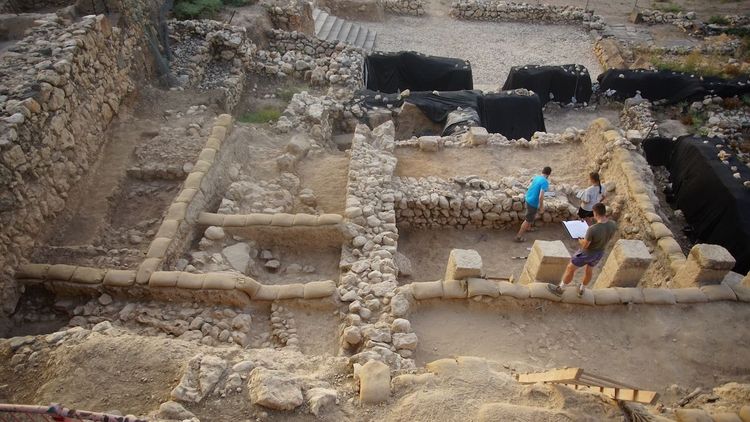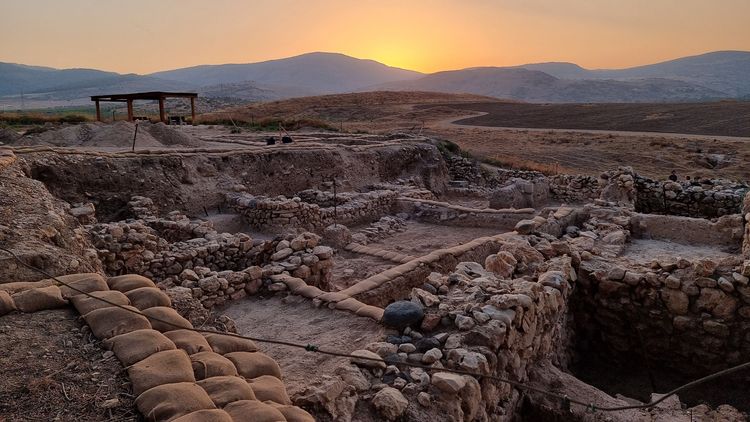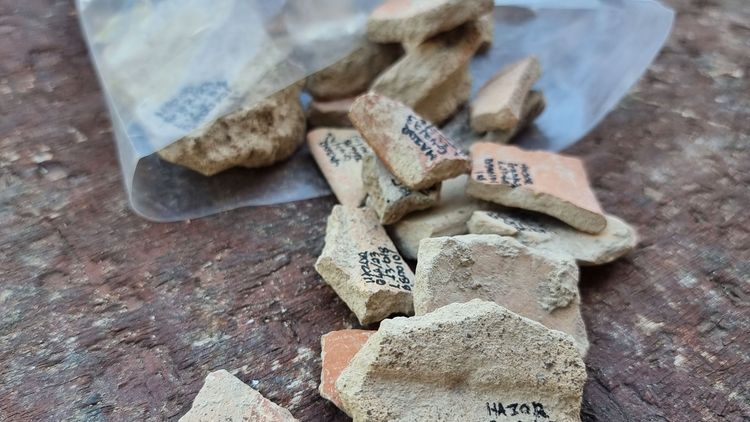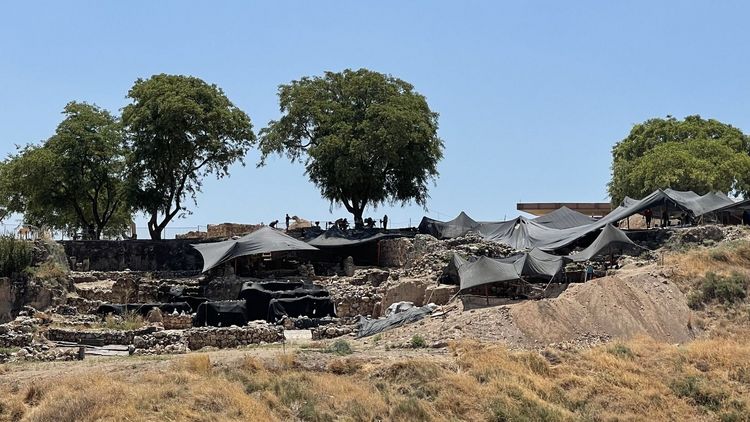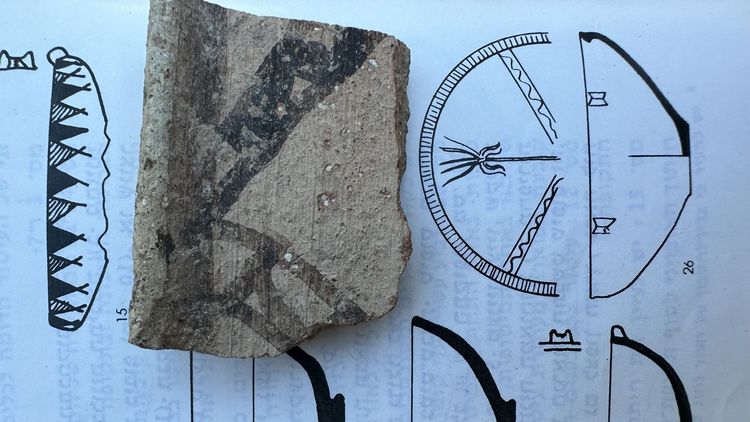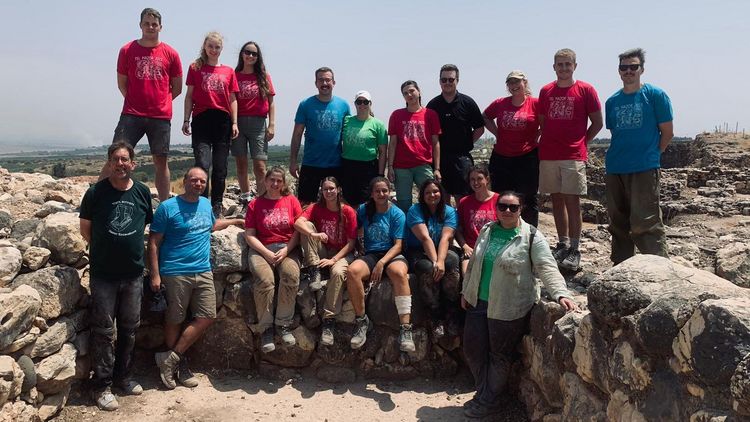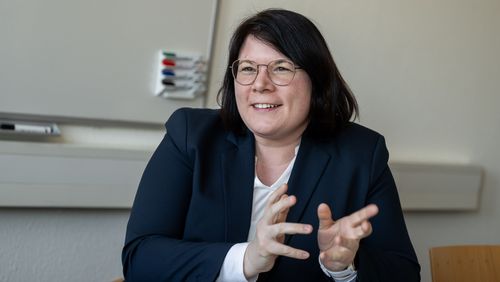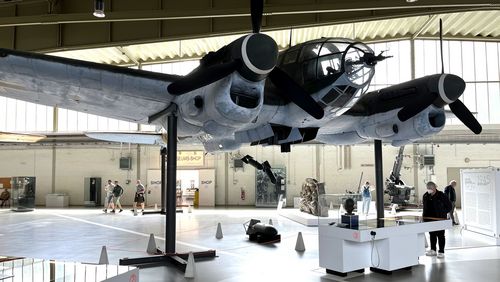Getting up at sunrise to excavate parts of an ancient city layer by layer with a pickaxe, bathing in the Jordan River at noon, then analysing ancient pottery in the afternoon at a kibbutz. What currently seems unimaginable was the daily routine for 17 students from Oldenburg this summer at Israel’s largest archeological excavation site. They spent three weeks of the semester break there as part of a special module with Professor Benedikt Hensel.
As the winter semester begins and Maryam Matta and Sophie Dierks look back on their summer break, the two students find it hard to reconcile the TV images of an Israel at war with their memories of just a few weeks ago. Maryam and Sophie are two of 17 Oldenburg students who took part in the Biblical Archaeology and Regional Studies Summer School in northern Israel this August. Together with volunteers from Israel, France, Spain, Poland, Canada and the US they participated in Israel’s largest archaeological excavation project, the Hazor excavations, as well as various excursions and meetings with high-ranking personalities from various religions.
When asked about her most memorable experience in Israel, Maryam recalls a contemplative moment which stands in stark contrast to current events: her last assignment at the excavation site, where, as an exception, she remained until the evening hours. On that day the final photos and drawings of the recently uncovered building structures were completed, and the 22-year-old student was still at the site when the sun set over the ancient settlement mound and “the excavation season drew to an end”.
It had all begun three weeks earlier with the arrival of a group of 20 people from the University of Oldenburg at the Hazor site in northern Israel. Benedikt Hensel, Professor of Hebrew Bible at the University’s Institute of Theology and Religious Education and Co-Director of the Selz Foundation Hazor Excavations in Memory of Yigael Yadin, was already on site when his students moved into the nearby Kibbutz Kfar Blum. “The facilities were very basic, but the ambiente, the people from different cultures and the excellent cuisine – which was completely new to me – more than made up for it,” Sophie comments enthusiastically.
“Sweat and sore muscles“ instead of desk work
From then on, the students got up every day at the crack of dawn to start work at 5 a.m. so they could set aside their pickaxes at midday and escape the worst of the summer heat. Sophie was assigned to area M69 in the former “upper city” of Hazor, whose main feature is an already excavated 3,000-year-old city wall. Meanwhile, Maryam worked with the team in area M4. “This area roughly corresponds to an extension of the palace that once stood there,” she says. “Hazor was the most important city in the entire Levant in the first half of the second millennium BC, and with a surface area of 80 hectares it was also the largest,” explains Hensel, who studied archaeology as well as theology. “A considerable proportion of the trade and cultural transfer to and from this region went through this city back then.” Hazor was destroyed in the 13th century BC then resettled some 3,000 years ago. “We did most of our excavations in areas which are associated with that period,” says Hensel.
Maryam says her job was to “dig as deep as possible with the pickaxe and remove large stones while keeping the ground as level as possible.” Sophie’s team was also tasked with removing layers one by one, so as to gradually progress from the Iron-Age finds of the rebuilt Hazor to the preceding Bronze Age. “There was a lot of sweating and sore muscles,” says Sophie (23). “But for me those three weeks were a pleasant contrast to the deskbound studying I normally do.” The most exciting finds in “her” area were a wall of more recent origins and the remains of a clay oven (“tabun”), located next to those of a former dwelling. Maryam was fascinated by “how contradictory some finds seemed at first glance, and how difficult they were to date”. Discoveries of imported pottery have shown how wide the network of commerce was even in biblical times, she explains.
“Archaeology makes history tangible and it makes the biblical stories – entwined with the lifeworld of those times – relatable. That fascinates me,” says Hensel, who, together with Director of Excavations Dr Igor Kreimerman from the Hebrew University of Jerusalem, is planning annual excavations in Hazor until at least the summer of 2028 – including a Summer School for Oldenburg students each year. Maryam and Sophie, who both study history and Protestant theology, now share this fascination. Shortly before she completes her master’s degree and begins her teacher traineeship, Sophie says her experiences in Israel will enable her to “give authentic religious education classes later on, and establish direct and personal links to history”. Meanwhile, Maryam is already planning to return next summer – hot on the trail of the ancient megacity of Hazor.

